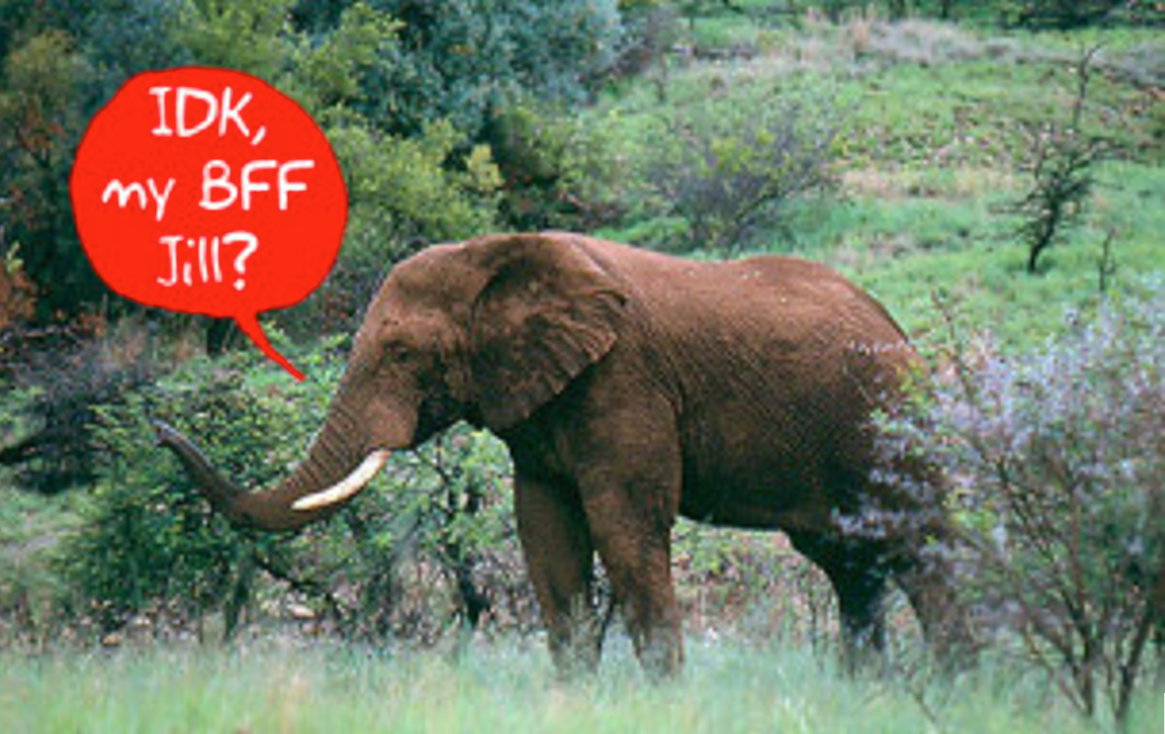Ingenious solutions to human-wildlife conflict in sub-Saharan Africa and Beyond Bees, Chilli, Ping pong and The 10% Club
I was lucky enough to escape to Kenya during lockdown 2.0. Whilst there, I was sent an incredible video of a large male warthog caught, darted and removed from inside a Nairobi supermarket; ‘Pumba’ meets supermarket sweep! It was a more amusing example of the human-wildlife conflict that has inevitably risen across Africa during Covid as local populations have had to adapt to the ever-tighter restrictions.
Human-wildlife conflict is a growing problem in Africa; defined as when interactions between humans and wildlife lead to negative impact on both sides. It is the local communities who bear the cost of crop loss, livestock predation, human injury and sometimes, even death.
In the quest to survive and thrive, humans have already converted 38% of the world's land area for farming; in addition we have deforested land for industry, mining and infrastructure, leaving less than 15% of the world's land area as terrestrial protected areas for biodiversity conservation. This conflict over natural resources, especially land and water, is the root cause of human-wildlife conflict.
It is hard to come up with solutions that protect farmers, their land and endangered species. Hard, but by no means impossible.
The Tofauti Foundation is all about collaborating to find positive solutions to the increasing problem of human-wildlife conflict and so I wanted to look further at some of the creative solutions that are helping animals and humans co-exist on better, more manageable terms. There are many clever and creative ways we as humans can leave a positive footprint in our relationship with the world’s wildlife. Here are just a few…
The 10% Club
In conjunction with Tsavo Trust in Kenya our very own Tofatui Foundation are implementing what we have called The 10% Fence Plan. The initiative supports the communities that are constantly fighting the animals who search for water, crops and livestock to eat. It is explained to the community that because of the animals, this safety provision is being made available and so once 10% of their land is fenced their home, ‘shamba’ (vegetable patch in Swahili) and all livestock must be in that area for protection at night. The remaining land (90%), must be left fallow so that wildlife can graze and have cover, as well as roam lands as they have done for generations before the human population expanded into their habitat.
Tofauti is proud to report that we have installed three electrified fences on three different community owned parcels of land and early reports from the local community are extremely promising.
Photo by: The Tofauti Foundation
As Tsavo Trust has operated in the area for over 6 years, we have collated historical data of the human-wildlife conflict cases, and therefore will be able to directly compare incidence of attacks pre and post the fence installations in 2021.
Nature’s Bounty
To keep elephants at a safe distance from their farms and homes, African villagers have turned to two unlikelysolutions: bees and hot chilli peppers.
Did you know that elephants are terrified of bees?! This insight has led to the construction of bee fences aroundfarms to keep marauding pachyderms out and not only mitigates human wildlife conflict, it simultaneously generates another stream of revenue for those involved.
Credit: The Elephants and Bees Project / Lucy King
The Elephant and Bees Project is a great live example and another one supported by the Tsavo Trust. Using her knowledge of elephantine nervousness around African honey bees and irregular movement, Lucy King, research associate with the Department of Zoology at Oxford University, set out to create an inexpensive structure that would save crops from giant plodding feet. After years of working with Kenyan farmers on different ideas, King came up with a beehive fence - a collection of moving hives on different levels.
This is perfect for elephants, who get used to uniformity, and can work out how to break through a linear electric barrier. It has been so successful that the Kenyan Wildlife Service (KWS) has included the unusual fence in its action plan for the next 20 years. This means more constructions will go up around small-scale farms, and more locals will benefit as a result.
Another advantage to the bees is that they create a second income for farmers. Honey and candles can be made,and increased yields delivered, not only as a result of less crop raiding, but from increased pollination of the flowers and crops on farms.
Elephants and chilli don’t seem to mix too well either! Elephants dislike a chemical called capsaicin found in chili peppers, prompting farmers in Tanzania to smother their fences with a mixture of oil and chili peppers.
Credit: WWF
Farmers in Zambia meanwhile are experimenting with chili to deter crop trampling elephants. They mix elephant dung with chili and water to make what are known technically as “chili bombs.” Once dry, the balls are lit with hot coals and strategically placed around the precious fields where they burn for hours. The smell they give off is pungent enough to offend elephants’ sensitive trunks and make them keep their distance. Although it currently costs to buy in the chili required for the mix, local NGOs are working with the World Wildlife Fund (WWF) to produce it and ultimately make it a cash crop.
An even more recent and equally ingenious ‘chilli-based’ approach involves firing ping pong balls loaded with chilli to deter elephants. Whatever next?!
Credit: The Times / Tusk Trust
Dancing Lights
To scare off destructive nocturnal wildlife, farmers are working with automatic light machines. Half strobe light and half motion sensor, the machines flash beams of light randomly in all directions to mimic a farmer with a flashlight. Wary nocturnal animals have been shown to avoid such light signals, although the effect wears off over time as wildlife becomes habituated to the lights.
Young Kenyan, Richard Tuerre, harnessed his electronics skills to protect his land AND simultaneously protecting endangered wildlife. One morning, he discovered his family’s bull had been eaten by lions during the night. He was sad, but also recognised how many lions are killed as a result of farmers and Maasi warriors protecting their land. As a ‘budding electronics whizz-kid’ he came up with a solution. Richard created a fence with moving lights that helps to deter wild animals from his land. These lights ward off wild animals without harming them physically or putting their lives in danger.
Turkish Delight
Lower down the African Continent the introduction of Anatolian Shepherd dogs to Namibian farms where livestock is easy prey for big cats. According to the Cheetah Conservation Fund (CFF), the use of the hounds, which have been protecting sheep from wolves in Turkey for 6,000 years, is having the desired effect with reports of fewer losses.
Credit: American Kennel Club
Track and Trace
Imagine getting a text message from a wild elephant. In the Western Ghats of India, a conservation initiative utilized texting as an early warning system to prevent human-elephant encounters. Elephant tracking collars embedded with SMS chips automatically text nearby residents, warning them of recent elephant movements. Before the project was implemented, a lack of awareness of elephant whereabouts played a roll in 75% of elephant-attributed human deaths in the region. Since the implementation of the early warning system, human deaths have dropped by 50%, with none being reported in 2010 and 2013.
Photo credit: Gizmodo.com
Shock and Awe
Animals don’t like getting shocked! To deter wildlife from human dominated areas, conservationists commonly use electricity to create a lasting negative impression. Solar powered electric fences keep crop-raiding elephants out of fields in Africa, while wildlife managers in Alaska use tasers to deter moose and bears that have become habituated to humans. Conservationists in India have even tried to discourage tiger attacks by rigging human shaped dummies with electricity.
Photocredit: Argotrade.co
Solving such human-wildlife problems is all about creativity, attitude and positivity. These examples show what we as a human race can do together to help retain and recharge the important balance of the natural world and its biodiversity. By collaborating more and working together better we can help bring a far better balance to the world.







